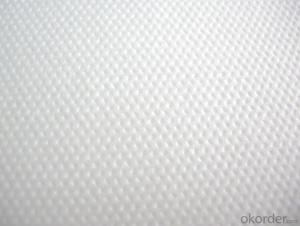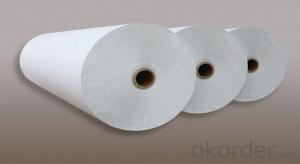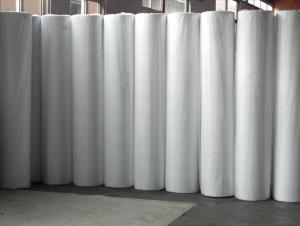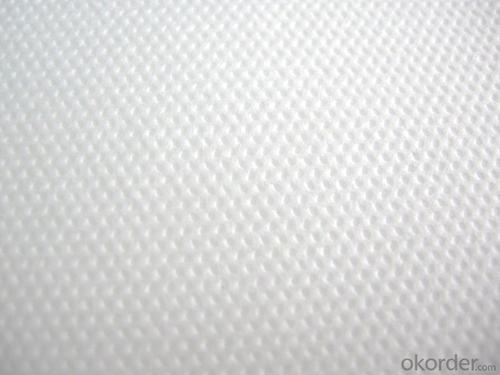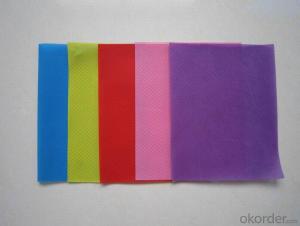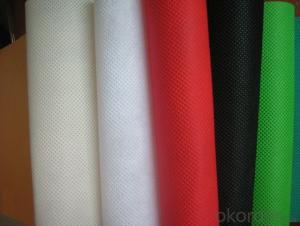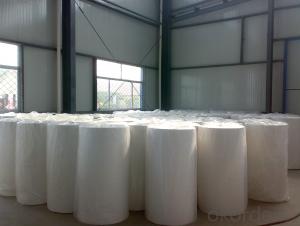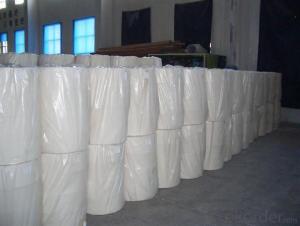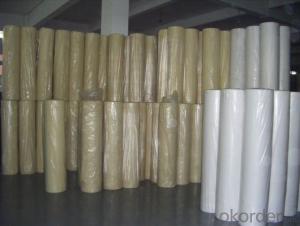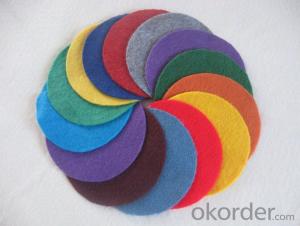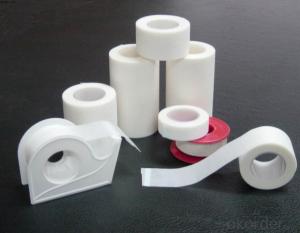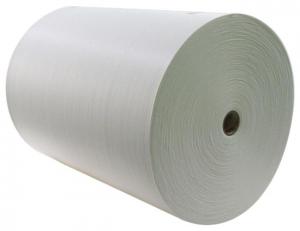Waterproof Polyester Spunbond Nonwoven Fabric Made in China
- Loading Port:
- Shanghai
- Payment Terms:
- TT OR LC
- Min Order Qty:
- 1000 kg
- Supply Capability:
- 100000 kg/month
OKorder Service Pledge
OKorder Financial Service
You Might Also Like
Eco-friendly Polypropylene PET Spunbond Non-woven Fabrics Made in China
Our products have been widely used in the field of medical& sanitary, industry &agriculture, and construction &daily-used products such as agriculture plant covers, roof waterproof materials, disposable items for medical and industrial applications, liners for furniture, lining in cases,apparel, warm facilities, bedding products, sofas, packing materials, packing material land mulriple cloth shopping bags, suits and garment covers, Industrial protective coveralls, garment accessory materials, bed articles, medical and sanitary articles as well.

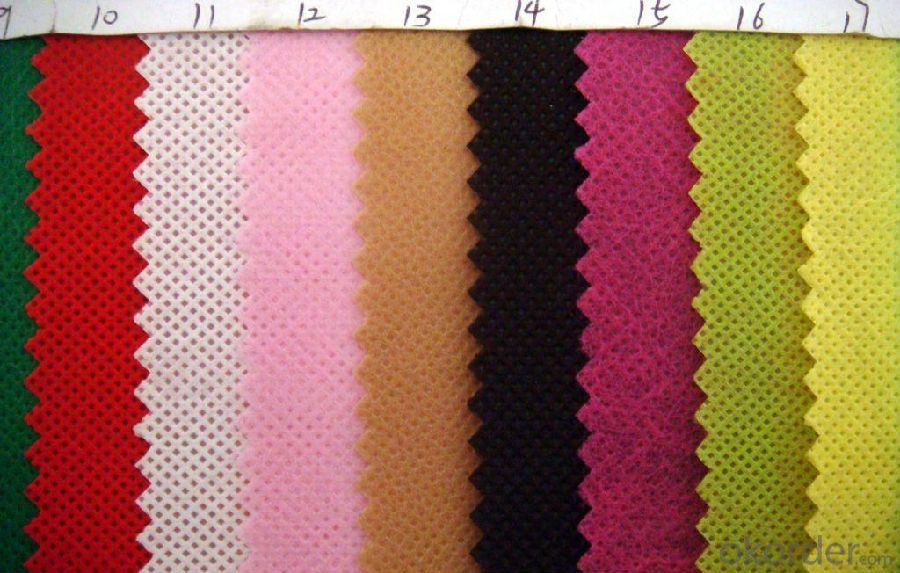
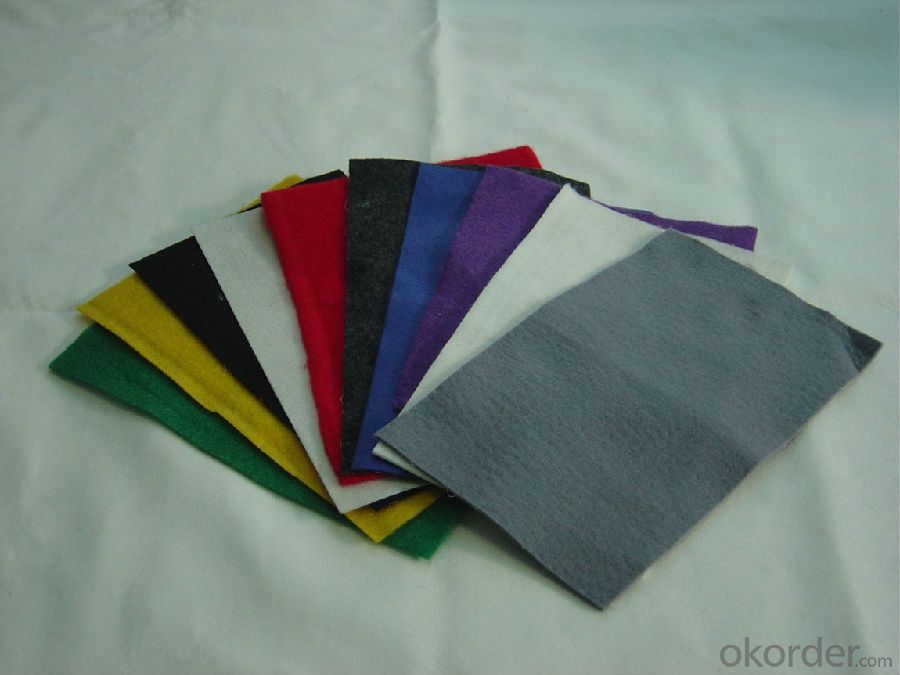
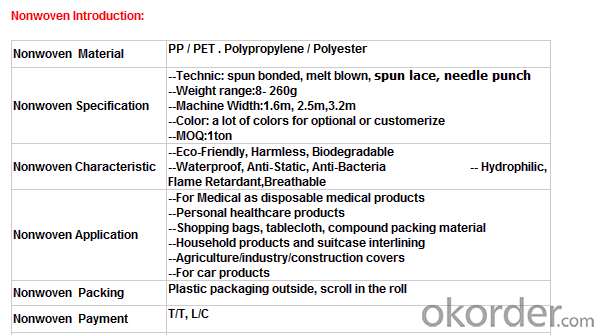
Our Service:
Within 24 hours reply ;
Well-trained and experienced staffs in English;
OEM & ODM , Customized are warmly welcomed , or design for you ;
Protecting customer’s privacy and profits;
Make sure the quality is approved , or we pay the return or remake them at once .
Nonwoven Advantage:
1. Light: Polypropylene is the main raw material; specific gravity is 0.9, is only third five, fleecy and touches well.
2. Flexibility: made up of microfiber (2-3D), dot by dot thermo-melt formed. Flexibility of products is suitable, comfortable.
3. Water resistance and breathability: slices of Polypropylene and finished products resist water, breathable and easy to maintain and wash.
4. Non-toxic, non-irritating: made of materials which catch up FDA standard, without other chemical composition, stable, non-toxic, no smell, safe for sensitive skin.
5. Anti-bacterial, anti-chemical: Polypropylene is blunt chemical substances can protect in liquid from bacterial and insects; antibacterial, alkali corrosion, erosion and the finished product will not affect sensitive skin.
FAQ:
Q: What standards are you carrying out for your products?
A: We produce according to the ISO9001 and ISO14001 rules.
Q: How to install the machine?
A: We will arrange 1~2 engineers to your factory to guide installation and assembly.
Q: What’s your international market?
A: We Have exported to about 40 countries and regions all around the world, such as, the USA, France, Singapore, Australia, Middle East, Brazil, Peru and so on.
Q: Do you sell steel shot or steel grit which can be uses in shot blasting machine?
A: We have four production lines for steel shot and steel grit production, one work shop for steel cut wire shots, and one workshop for stainless steel shot and Aluminium shot and so on.
Q: Do you have the right to export?
A: Yes, we registered in the Customs and gained the right to export by ourselves.
- Q: How can paint points be removed during textile processing?
- Paint itself is not binding on the textile, are relying on cross-linking agent, adhesive to fix.
- Q: What are the processes of dyeing and finishing of textiles?
- Pre-treatment, dyeing, printing, post-processing and other processes. Worsted fabric - billet - singeing - Lian Bo - wash it - Lian Bo - drying - in the inspection - cooked - cut hair - pressure light - tank steaming.
- Q: What are the textiles?
- Decorative textiles can be divided into indoor products, bedding and outdoor products, including home cloth and restaurant bath toiletries, such as: carpets, sofa sets, chairs, tapestries, patch, cover, textile, curtains, towels , Tablecloths, handkerchiefs, etc .; bedding, including bedspreads, bed sheets, was surface, quilt, blankets, towels, pillow core, the core, pillowcases and so on. Outdoor products include artificial turf and so on
- Q: Antistatic fabrics of textile electrostatic materials
- It has long been found that when the two insulators are rubbed and separated from each other, the dielectric coefficient, the higher object is positively charged, and the dielectric coefficient is low with a negative charge. This is the law found at the end of the nineteenth century, and this rule is consistent with many experimental results
- Q: What are the Advantages and Disadvantages of PE and PVC in Textile Fabrics
- With non-flammability, high strength, weather resistance and excellent geometric stability.
- Q: How does the chemical composition of the textile be analyzed?
- The chemical composition of a substance refers to the proportion of each chemical element, expressed in experimental form
- Q: What are the knowledge and abilities of the Merchants in the textile industry?
- You need to report to your superiors and propose a solution to the need to integrate the available resources to help the list in place.
- Q: What is the imo standard in the textile industry?
- International Association for the International Textile Industry (IVN), Soil Association (SA), Organic Trade Organization (OTA) and Japan Organic Cotton Association (JOCA) to develop global organic textile standards.
- Q: What is the role of textile degreasing in life?
- Textile degreasing agent This product is also quite targeted, not the same degreasing agent treatment results are different. Take efficient degreasing agent is concerned, efficient degreasing agent is a multi-purpose multi-purpose pre-treatment additives, especially for nylon, polyester warp emulsification, degreasing before the disposal process.
- Q: Buy two large round machine to do processing, in Changshu side of the textile processing to do it?
- In addition, Changshu City, the main clothing market. There are many wholesale trade clothing, for example, there are many in the vicinity of Changshu bus station.
Send your message to us
Waterproof Polyester Spunbond Nonwoven Fabric Made in China
- Loading Port:
- Shanghai
- Payment Terms:
- TT OR LC
- Min Order Qty:
- 1000 kg
- Supply Capability:
- 100000 kg/month
OKorder Service Pledge
OKorder Financial Service
Similar products
Hot products
Hot Searches
